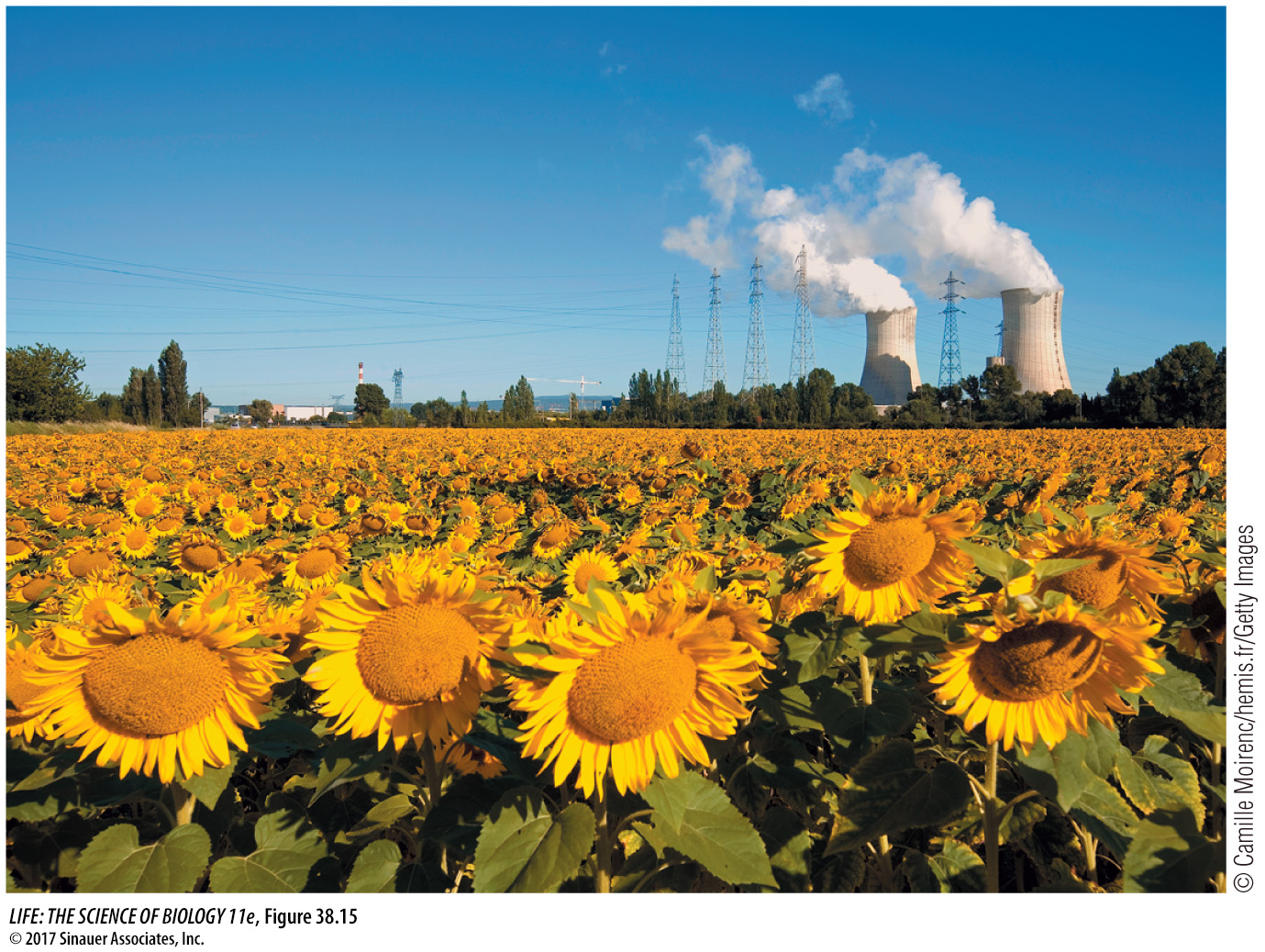Some plants can tolerate heavy metals
Salt is not the only toxic solute found in soils. High concentrations of some heavy metal ions, such as chromium, mercury, lead, and cadmium, are toxic to most plants; many of these ions are more toxic than sodium at equivalent concentrations.
Some places have a lot of heavy metals as a result of normal geological processes. In other places, acid rain leads to the release of toxic aluminum ions in the soil. Human activities, notably the mining of metallic ores, leave localized areas—
Some mine tailings are not completely barren. Investigations have shown that certain species of metal-
Perhaps the best-
Increased ion transport into the roots
Increased rates of translocation of ions to the leaves
Accumulation of ions in vacuoles in the shoot
Resistance to the ions’ toxicity
Knowledge of these hyperaccumulation mechanisms and the genes underlying them has led to the emergence of phytoremediation, a form of bioremediation (see Key Concept 18.5) that uses plants to clean up environmental pollution. Some phytoremediation projects use natural hyperaccumulators, whereas others use genes from hyperaccumulators to create transgenic plants that grow more rapidly and are better adapted to a particular polluted environment. In either case, the plants are grown in the contaminated soil, where they act as natural “vacuum cleaners” by taking up the contaminants. The plants are then harvested and disposed of to remove the contaminants. Perhaps the most dramatic use of phytoremediation occurred after an accident at the nuclear power plant at Chernobyl, Ukraine (then part of the Soviet Union), in 1986, when sunflower plants were used to remove uranium from the nearby soil. These plants are now being used in Japan to soak up radioactive substances from the Fukushima Daiichi reactor accident in 2011. Sunflowers are now the international symbol of nuclear disarmament (Figure 38.15)!
